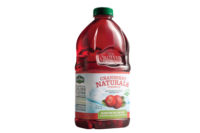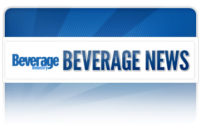Getting From Point A to Point B
Getting From Point A to Point B
By Joanna Cosgrove
New software and technology can make distribution
easier
Successful beverage manufacturing doesn’t end when the product rolls off the production line. It must get to the retailer in a timely fashion. Sounds easy enough, but factor in curveballs such as new customers, last-minute order changes and things as unpredictable as traffic jams and all of a sudden the notion of timeliness doesn’t seem all that plausible. That’s where high-tech distribution technologies come in. It used to be that routes were pre-planned on paper, using actual paper maps. Welcome to the 21st century.
For most companies, the basic distribution process
begins and ends with a back-end host system. Host system companies handle
“route accounting,” meaning they collect all of the raw sales,
inventory and route data, and feed it to logistics companies that analyze
and streamline the route logistics — determining the physical
location of the routes and the mapping needed to deliver to all the stops
on the route based on criteria such as distance and other factors such as
road construction and school zones that could impede delivery times. After
the data is processed by a logistics arm, it is fed back into the host
system, which furnishes beverage company with the critical and
ever-changing route stop sequences it needs to get its products on-shelf.
“There are so many route variables on a daily
basis,” explains Jennifer Hamilton, vice president and chief
executive officer at Ram Systems, a host system company based in La Crosse,
Wis. “There’s always some human intervention involved in the
process, but today’s software can manipulate scenarios impacting
thousands of daily stops in a monthly route. Good data analysis that
couples back-end inventory, raw sales and route details goes a long way in
determining the most efficient route scheduling.”
“Any beverage company that relies on integrated
software solutions needs to be reassured not only that their provider is
able to keep pace with the increasingly rapid evolution of technology, but
that their particular platform can absorb the new technologies to their
benefit,” comments Henry Ferguson, vice president, Internet
Strategies for Coaxis Inc., Portland, Ore.
Advances in Internet technology, wireless technology
and highly portable and increasingly powerful devices such as tablet PCs
and GPS locators necessitate that route accounting systems be able to
absorb solutions quickly, without the long development cycle previously
required of older programming languages and methodologies, Ferguson says.
“The longer an organization resists this evolution, the more painful
it will become. ‘Bolting on’ new technologies without
addressing the underlying architecture is a dangerous game to play and
greatly complicates ultimately switching to the newer, better solutions
from the ground up.”
Budget is always a consideration, but many times it
isn’t the most critical variable because old software will be a
budget buster. Old software can lock wholesalers into older, more
expensive, less productive hardware technologies. New, modern software is
cheaper because it can allow users to use new, less expensive hardware
technology that can be implemented across a wider business range.
“For example,” explains Ferguson, “a beverage company may
decide that regardless of cost, their sales force needs to integrate
WiFi-enabled tablet PCs with GPS locators and signature capture that
communicate wirelessly through the company VPN directly with their route
accounting system. The problem won’t be the cost of that hardware
(which continues to fall), but that their legacy systems simply can’t
be made to understand the new technologies. Worse yet is cobbling together
different moving parts from different providers requiring a tangle of
equipment, underlying technology, service
centers and support.”
Brian Hodgson, director of marketing at Trimble,
Sunnyvale, Calif., agrees, adding that new handheld technologies boast more
processing power, memory and wireless connectivity, enabling improvements
in three areas: more selling information is available to sales reps on a
per-item, per-store basis; detailed sales information provides better
store-level demand forecasting to eliminate out-of-stocks (related to
promotions and seasonal sales, etc.); and wireless order transmissions back
to the warehouse streamlines the fulfillment process. “Prior to this,
the orders were all submitted at the end of the day, which would cause
demand spikes and may require overtime to fulfill properly,” he says.
Software rundown
From software to handheld devices, technology designed to streamline beverage shipping and distribution is
evolving at a breakneck pace.
The latest software suite from Insight Distribution
Software, Hunt Valley, Md., implements a three-pronged approach that
reaches from the front office to the warehouse to field sales and delivery,
allowing all of the wholesalers’ employees to benefit from the rapid
advances of technology.
The RS2 module code at the core of the software suite
combines the ease of use and the graphical look and feel of an internet
browser while connecting users to data through a single database. From
order receipt to warehouse picking, route scheduling through delivery and
reconciliation, the daily route accounting processing functions are
simplified by graphically presenting information in an easy-to-read and use
format.
The sales module combines the elements necessary for
mobile order taking, coupled with territory management and sales execution
software, giving beverage sales staffs the information and organization
they need to be effective in today’s competitive environment. From
full-screen tablets to PDA/Smart Phones, wholesalers can mix and match
these devices to give their sales organizations the tools they need.
The operations productivity module for beverage
distribution combines financial inventory information with a warehouse
management capability that gives operations employees and management
accurate up-to-date information about what products are in individual or
multiple warehouses, where these products are located, what products are
scheduled to come in, mobile automation of the product receipt process,
complete inventory tracking and product forecasting.
Houston-based Satellite Logistics Group recently
unveiled the next generation of its trademarked Kegspediter System with
enhancements that allow brewers to realize even greater efficiencies in the
keg return process. The system’s newest enhancements allow
forecasting, online services, e-mail count requests, wholesaler count
confirmation, new deposit notification methods and a new invoicing format.
Wholesalers are able to set seasonal peaks, such as
Spring Break in Florida or ski season in Colorado and Utah and better
prepare for these peak sales periods. “Direct customer input allows
us to look into the future to plan, rather than referencing previous
years’ performance,” says Kevin Brady, owner, president and
Kegspediter System creator.
The updated Kegspediter System also manages requests
for wholesalers’ keg counts on an automated basis through e-mail and
provides a link to a secure Web site where wholesalers will update keg
quantities instantly. Upon receipt of kegs, e-mail confirmations are
automatically generated and sent to the wholesaler.
“The entire system is designed to give customers
more control over their keg assets and online visibility through our
integrated transportation management system and warehouse management
system,” Brady says.
DistributionSuite from Intervolve Inc., Raleigh, N.C.,
is a Web and mobile application suite designed to help wholesalers in the
direct-store-delivery market eliminate tedious, error-prone manual
processes while simultaneously gaining visibility into vital market trends.
The suite comprises eight modules, including a Sales Analysis module that
provides on-demand visibility into market trends while measuring sales team
effectiveness, allowing anyone to run custom sales analyses on a PC, tablet
or mobile device.
Other modules are the Today module, which uses one corporate calendar and messaging system to
plan, assign and post market activities. The Retailer Interface module uses
the Internet to provide retailers a self-service platform to view pricing
and sales, post service issues and place orders. The Point of Sale module
combines handheld and analytical reporting to establish true
chain-of-custody and better distribution of effective POS and signage.
Roadnet Transportation Suite from UPS Logistics,
Baltimore, Md., offers a choice of software solutions that offer control
over every aspect of the order-to-delivery process through comprehensive
territory planning, street-level route optimization, automated warehouse
loading, real-time delivery management and GPS tracking. What’s more,
each of the company’s products, whether deployed individually or as a
fully integrated suite for optimized results, can blend seamlessly with a
company’s current operations.
As part of the suite, Territory Planner plans,
balances and manages route-sales, pre-sales and standard route operations,
while lowering related delivery costs. By considering all relevant
historical data into individual territory solutions, it helps analyze,
modify and optimize entire sales, merchandising and delivery operations
from the top down, with the added capability of viewing multiple scenarios
by seasonal demand or other criteria.
Also part of the suite is Roadnet, which offers
on-the-fly, street-level routing passes that quickly generate customized
routing assignments. FleetLoader streamlines each step of the loading
process, designing loads (including pre-building, staging and exclusions)
that integrate seamlessly to final loading and routing. MobileCast enables
the real-time visualization of each vehicle on its respective route plan.
Portable Internet, Fair Lawn, N.J., recently announced
the availability of “Planned vs. Actual Reporting of Routes,”
an inexpensive option for GPS Tracker and GPS Workflow Editions. The
company’s software as a service (SaaS) transforms GPS-enabled cell
phones and PDA’s into wireless workflow systems for mobile workers,
their customers and suppliers. The feature automatically measures and
compares actual performance vs. a planned route. Routes can be optionally
delivered to GPS handsets in real-time; however, the feature does not
require dispatch of routes or any interaction by the mobile worker.
Last November, West Chester, Pa.-based MEI announced
that it would incorporate Cantaloupe Systems technology into its new
Easitrax Vending Management Solution, which delivers dynamic scheduling
technology that increases driver productivity, along with the ability for
machines to automatically contact operators when problems occur.
MEI’s Easitrax frees operators from traditional
reliance on inefficient forecasting models, providing replenishment
scheduling via constantly updated stock and usage information. Building on
MEI’s remote data port — used for credit card transactions and first-walk elimination — the Cantaloupe
Systems’ Seed Platform dynamically schedules machines for
replenishment, effectively eliminating sold-out columns.
“Integrating MEI and Cantaloupe technologies
means improved consumer and location satisfaction from higher fills and
shorter breakdown duration, while the route efficiency drives operator
profitability” says Tony Ioele, MEI’s business development
manager for vending management solutions.
Mobile convenience
The rugged MC9097 mobile computer from Symbol
Technologies, Holtsville, N.Y., provides mobile workers with a flexible,
always-on voice and data connection to co-workers, clients and associates,
as well as critical business applications and systems — all on a
single device. High-performance processing supports rich applications,
while superior sound quality and the onboard iDEN radio deliver robust
voice communications, complete with Nextel’s Nationwide Walkie-Talkie
functionality for instant, cost-effective voice connectivity. Assisted GPS
supports location tracking applications, enabling more efficient routing as
well as dynamic route changes. Seamless WLAN connectivity provides
cost-effective voice and data communications in the office, hot spots and
more. This single device eliminates the need to purchase and manage
additional devices for all voice and data communications, thus reducing
costs.
In April, Atlanta, Ga.-based LXE Inc., unveiled its
ultra-rugged RX2 lift truck mounted RFID reader at Wal-Mart Supplier
On-Boarding Forum and EPCglobal US Tech Expo. The RX2 addresses a need for
a easy-to-install, vehicle-mounted RFID reader that can be used for
standard RFID-based forklift pallet move applications such as shipping,
receiving, picking and put-aways where EPC RFID-based identification of
pallet loads and locations are used.
The RX2 ships ready-to-work
with the Windows CE operating system and an 802.11 radio, and can run off
its own battery or the lift truck’s power. The RX2 supports the
reading of EPC Class 0, Class 1 and C1G2 (Gen2) tags. BI
Looking for a reprint of this article?
From high-res PDFs to custom plaques, order your copy today!









